Mathematics in Motor Racing
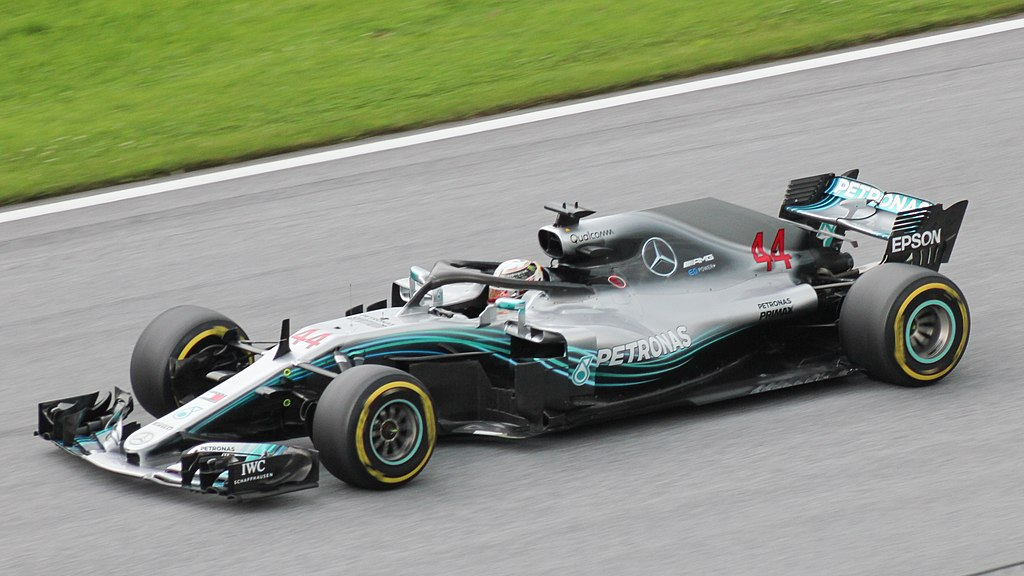
This activity has been developed by Dr Tudur Davies from the Department of Mathematics and Mr Jakub Sowa from the Department of Computer Science at Aberystwyth University.
The project has been supported by a small grant by the London Mathematical Society (LMS). Our Welsh medium provision is supported by the Coleg Cymraeg Cenedlaethol.
Contact information
Please feel free to contact us with any queries or comments about this activity by emailing maths@aber.ac.uk .
[1] Image by Lukas Raich, CC BY-SA 4.0, via Wikimedia Commons. ↩
Mathemateg mewn Rasio Ceir

Mae'r wefan hon wedi'i datblygu gan Dr Tudur Davies o Adran Mathemateg, a Mr Jakub Sowa o Adran Gyfrifiadureg, Prifysgol Aberystwyth.
Cefnogwyd y prosiect gan grant bach y London Mathematical Society (LMS). Cefnogir ein darpariaeth cyfrwng Cymraeg gan y Coleg Cymraeg Cenedlaethol.
Manylion cyswllt
Os oes gennych unrhyw gwestiynau neu sylwadau am y gweithgaredd hwn yna cysylltwch â ni trwy'r cyfeiriad e-bost maths@aber.ac.uk .
[1] Delwedd gan Lukas Raich, CC BY-SA 4.0, trwy Wikimedia Commons. ↩
Mathematics in Sport
Mathematics plays an important role in our everyday lives, sometimes without us even noticing. It is a core element in the development of the technology that we depend on, and helps us to control our money and time. Mathematics is also useful to measure progress, something that is imporant in many fields including sport. In truth, we can apply mathematics to more or less any aspect of sport, be it for increasing the chance of succeeding, or just to consider interesting mathematical problems. Let us consider a few examples of where mathematics applies in sport before we move on to consider a particular problem.
Mechanics
Mechanics is a branch of mathematics that involves studying the effect that classical forces have on objects. Mechanics can therefore be used to try to understand and predict the motion of a ball in football, rugby, golf or tennis, or to understand the collisions between snooker balls. To do so we will need to study Newton's laws of motion and the associated differential equations.
Hydrodynamics
Hydrodynamics is a branch of science concerned with the forces that are exerted on objects by fluids (like air). In sport, it is a subject that applies to the process of designing racing motor bikes, cars, and sailing boats.

The forces exerted by flowing air also play an important role in ball games. It's possible that you've noticed that a spinning ball has a very different trajectory in the air compared to that of a non-spinning ball. Footballers sometimes apply some spin to a ball when shooting at goal, so that the ball swerves, making it hard for the goalkeeper to save it. In such a scenario football players are generating the Magnus effect, where the flow of air as a result of the spin on the ball creates regions with a pressure difference either side of the ball, thus causing the ball to swerve.
Mathematicans can also use hydrodynamics to advise on the design of balls for football, golf and tennis (etc). You've probably noticed that a golf ball has dimples on its surface. These dimples are significant as they cause a particular air flow around the ball that drastically reduces the drag force on the ball, enabling it to travel much further in the air.



Mathematics plays an important role in the design of footballs, golf balls and tennis balls.
Game Theory
Sport persons and teams constantly use game theory. This usually involves applying relatively simple probablility models to try to choose the best strategy for beating their opponents. For example, game theory applies in a penalty shootout in football. Here players (or at least coaches) will have studied previous behaviour and tendencies of their opponents and will try to use this information to increase their chance of success. A good understanding of probability theory and randomness can enable a player to maximise his/her chance of success.
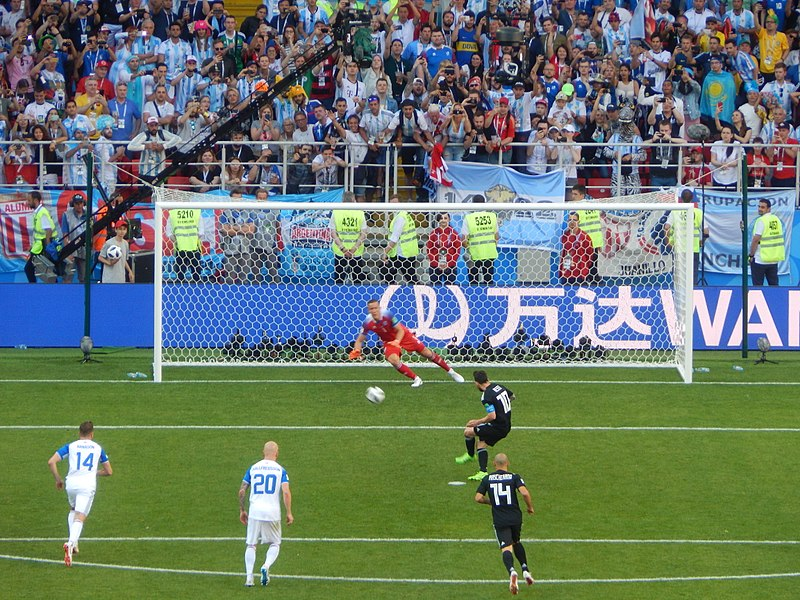
Graphs and Networks
Graph theory is the study of mathematical structures for modelling the relationship between objects. The topic is core in the development of algorithms for timetabling events where there are many constraints. Such events include those in sport such as international tournaments, where constraints such as travelling distances and restrictions imposed by local authorites are fed into the algorithm.
In the next section, we'll revise some of the mathematics that is needed for choosing the best racing strategy in Formula 1.
[2] Image by Adrian Saxton, CC BY 3.0, via Wikimedia Commons.
↩
[3] Image by Oleg Bkhambri (Voltmetro), CC BY-SA 4.0, via Wikimedia Commons.
↩
Mathemateg mewn Chwaraeon
Mae mathemateg yn chwarae rhan bwysig yn ein bywydau bob dydd, weithiau heb i ni sylwi ar hynny. Mae’n greiddiol i’r dechnoleg rydym bellach yn dibynnu arno, ac yn ein cynorthwyo i reoli ein harian a’n amser. Mae mathemateg hefyd yn ddefnyddiol er mwyn mesur cynnydd, rhywbeth sy’n bwysig mewn nifer o feysydd gan gynnwys chwaraeon. Yn wir, gellir cymhwyso mathemateg i fwy neu lai unrhyw agwedd o chwaraeon, boed hynny er mwyn cynyddu’r siawns o lwyddo mewn camp benodol, neu er mwyn ystyried problemau mathemategol diddorol. Gadewch i ni’n gyntaf ystyried rhai enghreifftiau lle mae mathemateg yn ddefnyddiol mewn chwaraeon, cyn mynd ati i ystyried un broblem benodol.
Mecaneg
Mae mecaneg yn gangen o fathemateg sy’n ymwneud â grymoedd clasurol a’r effaith maent yn ei gael ar wrthrychau. Gellir defnyddio mecaneg er mwyn deall a rhagdybio mudiant pêl yn yr awyr mewn gêm bêl droed, rygbi, golff neu dennis, neu er mwyn deall y gwrthdrawiadau rhwng peli snwcer. Er mwyn gwneud hynny bydd angen astudio deddfau mudiant Newton a’r hafaliadau differol cysylltiedig.
Hydrodynameg
Mae hydrodynameg yn ymwneud â’r grymoedd sy’n cael eu gweithredu ar wrthrychau gan lifyddion (fel aer), ac felly mae’n faes pwysig yn y broses o ddylunio beic neu gar modur, neu gwch hwylio er enghraifft.

Mae llif aer hefyd yn chwarae rhan bwysig mewn chwaraeon peli. Efallai eich bod wedi sylwi fod rhoi sbin ar bêl yn amharu cryn dipyn ar ei mudiant yn yr awyr. Mae pêl droedwyr er enghraifft yn rhoi sbin ar bêl mewn ciciau rhydd, er mwyn ceisio crymanu’r bêl o gwmpas wal amddiffynnol ac i mewn i’r gôl. Yma maent yn gwneud defnydd o effaith Magnus, lle mae sbin y bêl yn arwain at greu gwahaniaeth yng ngwasgedd yr aer bob ochr i'r bêl o ganlyniad i'r llif.
Mae mathemategwyr hefyd yn gallu defnyddio'u gwybodaeth o hydrodynameg er mwyn cynghori ar ddyluniad peli, er enghraifft rhai pêl droed, golff a tennis (gweler isod). Mae’n siŵr eich bod wedi sylwi fod gan bêl golff bantiau arni. Mae’r pantiau hynny’n arwyddocaol gan eu bod yn sicrhau llif aer penodol o gwmpas y bêl sy’n caniatau i'r bêl fynd ymhellach yn yr awyr.



Mae mathemateg yn chwarae rhan bwysig yn nyluniad peli fel rhai pêl droed, golff a tennis.
Theori Gêm
Mae unigolion a thimau chwaraeon hefyd yn defnyddio theori gêm yn gyson. Yma maent yn defnyddio modelau tebygolrwydd er mwyn ceisio dewis y strategaeth orau ar gyfer trechu eu gwrthwynebwyr. Mae theori gêm yn chwarae rhan bwysig mewn ciciau o’r smotyn mewn gem bêl droed er enghraifft. Mae’n debygol y bydd y chwaraewyr (neu’r hyfforddwyr) wedi astudio patrymau ymddygiad eu gwrthwynebwyr, ac yn defnyddio hynny er mwyn cynyddu eu siawns o fod yn llwyddiannus. Gall dealltwriaeth dda o debygolrwydd gynyddu’r siawns o lwyddo.

Theori Graffiau a Rhwydweithiau
Mae theori graffiau yn astudiaeth o strwythurau mathemategol sy’n cael eu defnyddio i fodelu’r perthnasau rhwng gwrthrychau. Mae’r maes yn greiddiol yn natblygiad algorithmau ar gyfer trefnu amserlenni lle mae yna nifer o gyfyngiadau. Mae’r rhain yn cynnwys amserlenni gemau mewn cystadlaethau rhynglwladol, lle caiff cyfyngiadau fel pellter teithio ac unrhyw ofynion gan awdurdodau lleol eu bwydo i mewn i’r algorithm.
Yn y rhan nesaf, byddwn yn adolygu ychydig o'r mathemateg y byddwn ei angen er mwyn dewis y strategaeth orau ar gyfer ras Formula 1.
[2] Delwedd gan Adrian Saxton, CC BY 3.0, trwy Wikimedia Commons.
↩
[3] Delwedd gan Oleg Bkhambri (Voltmetro), CC BY-SA 4.0, trwy Wikimedia Commons.
↩
Sequences and Series
Suppose that we want to determine the best racing strategy for a motor race such as Formula 1. We'll do so by considering lap times in a race as a sequence and the total time taken to complete the race as a series. So let us furst revise what we mean by the terms "sequence" and "series".
A sequence in mathematics is a list of objects or events that occur in a particular order, so that every member is positioned either in front or after the others. Let us consider two common types of sequences:
Arithmetic Sequence
Let \(a\) and \(d\) be real numbers that denote the first term and the common difference
between consecutive terms in a sequence respectively. So an arithmetic sequence is an infinite collection
of terms with the following form:
We can also define this arithmetic sequence explicitly as \((u_n)_{n=1}^\infty\) with \(u_n=a+(n-1)d\), where \(u_n\) denotes the \(n\)th term.
Geometric Sequence
Let \(a\) and \(r\) be real numbers that denote the first term and the common ratio between consecutive terms in a sequence respectively. A geometric sequence has the form $$a,\,ar,\,ar^2,\,ar^3,\,...,\,ar^{n-1},\,ar^n,\,...$$ We can define this geometric sequence explicitly as \((u_n)_{n=1}^\infty\) with \(u_n=ar^{n-1}\), where \(u_n\) denotes the \(n\)th term.
Have a go at the following exercises.
Exercises 1
- Determine which of the following sequences are arithmetic sequences, geometric sequences or neither.
- \(1.0\), \(-0.5\), \(0.25\), \(-0.125\), \(0.0625\), \(-0.03125\), ...
- \(-5\), \(-1\), \(3\), \(7\), \(11\), \(15\), \(19\), \(23\), ...
- \(0\), \(1\), \(1\), \(2\), \(3\), \(5\), \(8\), \(13\), \(21\), \(34\), ...
- \(-5\), \(10\), \(-20\), \(40\), \(-80\), \(160\), \(-320\), \(640\), ...
- \(6\), \(1\), \(-4\), \(-9\), \(-14\), \(-19\), \(-24\), \(-29\), \(-34\), ...
- \(1\), \(\frac{1}{2}\), \(\frac{1}{3}\), \(\frac{1}{4}\), \(\frac{1}{5}\), \(\frac{1}{6}\), \(\frac{1}{7}\), \(\frac{1}{8}\), ...
- If the third term of some arithmetic sequence is 8 and the eighth term is 28, find the common difference \(d\) and the first term \(a\).
- If the second term of some geometric sequence is 3 and the fifth term is 81, find the common ratio \(r\) and the first term \(a\).
- Determine the formula for the \(n\)th term for the following sequences:
- \(-1\), \(2\), \(5\), \(8\), ...
- \(-5\), \(10\), \(-20\), \(40\), ...
- \(4\),\(7\),\(12\), \(19\) ...
- \(2\), \(7\), \(14\), \(23\), ...
- \(1\), \(1\), \(\frac{4}{3}\), \(2\), ...
You have considered some examples of sequences, and tried to establish patterns in some to derive a formula for the \(n\)th term. Suppose that we now need to find the sum of the first \(n\) terms of a sequence.
For example, try to calculate (without a calculator) the sum of the first \(100\) integers. That is determine the sum \(1+2+3+4+...+100\).
This task was famously set to Johann Carl Friedrich Gauss (1777 - 1855) by his teacher when he was only 10 years old! Gauss stunned his tearcher by solving the problem very quickly by establishing a pattern and finding an useful trick. Gauss was a mathematical genius from a young age and is often referred to as the "Prince of Mathematics". He was one of the first mathematicians to prove the fundamental theorem of algebra, and he made important contributions to advancing the fields of number theory, algebra, statistics, analysis, differential geometry, electrostatics, astronomy, optics (and more!). Let us consider the trick that Gauss used to derive a formula for determining the sum of the first \(n\) terms of an arithmetic sequence:
Arithmetic Series
An arithmetic series denotes the sum of terms from an arithmetic sequence. The sum of the first \(n\) terms of an arithmetic series is given by
To derive a formula for this series, it's worth reversing the order of the terms in the sum on the right hand side to give
Combining the two equations by adding them together and then dividing through by two gives the following formula for an arithmetic series: $$S_n = \frac{n}{2}\left[2a+(n-1)d\right].$$
Exercises 2
- Use the formula for athithmetic series to determine the sum of the first 100 integers.
- Calculate the sum of the first twenty terms in an arithmetic sequence with first term \(a=100\) and common difference \(d=0.1\).
- Show that the formula for the sum of the first \(n\) terms from a geometric sequence with first term \(a\) and common ratio \(r\) is $$ S_n = \frac{a(r^n-1)}{r-1}. $$
- Use the above formula to determine the sum
\(4+2+1+\frac{1}{2}+\frac{1}{4}+\frac{1}{8}+\frac{1}{16}\).
Dilyniannau a Chyfresi
Yn rhan nesaf y gweithgaredd hwn, byddwn yn ystyried sut i gyfrifo'r strategaeth ras orau ar gyfer ras geir Formula 1. Byddwn yn gwneud hynny trwy ystyried amser lapiau'r ras fel dilyniant ac amser cwblhau'r ras gyfan fel cyfres. Felly gadewch i ni'n gyntaf adolygu beth mae'r termau "dilyniant" a "cyfres" yn ei olygu.
Mewn mathemateg, mae dilyniant yn rhestr o wrthrychau neu ddigwyddiadau sydd mewn trefn dilynol, lle mae pob aelod naill ai yn dod o flaen neu ar ôl y gweddill. Gadewch i ni ystyried dau fath cyffredin o ddilyniant:
Dilyniant Rhifyddol
Gadewch i \(a\) fod yn rhif real sy'n dynodi term cyntaf mewn dilyniant, ac i \(d\) ddynodi'r gwahaniaeth
cyffredin rhwng termau dilynol. Felly mae'r dilyniant yn gasgliad anfeidraidd o dermau sydd â threfn benodol:
Gallwn ddiffinio'r dilyniant rhifyddol yma yn echblyg fel \((u_n)_{n=1}^\infty\) gydag \(u_n=a+(n-1)d\), lle mae \(u_n\) yn dynodi \(n\)fed term y dilyniant.
Dilyniant Geometrig
Gadewch i \(a\) fod yn rhif real sy'n dynodi term cyntaf mewn dilyniant, ac i \(r\) ddynodi cymhareb gyffredin rhwng termau dilynol. Mae gan ddilyniant geometrig y ffurf $$a,\,ar,\,ar^2,\,ar^3,\,...,\,ar^{n-1},\,ar^n,\,...$$ Gallwn ddiffinio'r dilyniant geometrig yma yn echblyg fel \((u_n)_{n=1}^\infty\) gyda \(u_n=ar^{n-1}\), lle mae \(u_n\) yn dynodi'r \(n\)fed term.
Rhowch gynnig ar yr ymarferion canlynol.
Ymarferion 1
- Penderfynwch pa rai o'r dilyniannau canlynol sy'n rhifyddol, geometrig neu'r un o'r ddau.
- \(1.0\), \(-0.5\), \(0.25\), \(-0.125\), \(0.0625\), \(-0.03125\), ...
- \(-5\), \(-1\), \(3\), \(7\), \(11\), \(15\), \(19\), \(23\), ...
- \(0\), \(1\), \(1\), \(2\), \(3\), \(5\), \(8\), \(13\), \(21\), \(34\), ...
- \(-5\), \(10\), \(-20\), \(40\), \(-80\), \(160\), \(-320\), \(640\), ...
- \(6\), \(1\), \(-4\), \(-9\), \(-14\), \(-19\), \(-24\), \(-29\), \(-34\), ...
- \(1\), \(\frac{1}{2}\), \(\frac{1}{3}\), \(\frac{1}{4}\), \(\frac{1}{5}\), \(\frac{1}{6}\), \(\frac{1}{7}\), \(\frac{1}{8}\), ...
- Os mai trydydd term rhyw ddilyniant rhifyddol yw 8 a’r wythfed term yw 28, darganfyddwch y gwahaniaeth cyffredin \(d\) a’r term cyntaf \(a\).
- Os mai ail derm rhyw ddilyniant geometrig yw 3 a’r pumed term yw 81, darganfyddwch y gymhareb gyffredinol \(r\) a’r term cyntaf \(a\).
- Darganfyddwch fformiwla ar gyfer yr \(n\)fed term o’r dilyniannau canlynol:
- \(-1\), \(2\), \(5\), \(8\), ...
- \(-5\), \(10\), \(-20\), \(40\), ...
- \(4\),\(7\),\(12\), \(19\) ...
- \(2\), \(7\), \(14\), \(23\), ...
- \(1\), \(1\), \(\frac{4}{3}\), \(2\), ...
Rydym wedi ystyried enghreifftiau o ddilyniannau, ac wedi ceisio adnabod patrymau mewn rhai o'r dilyniannau hynny er mwyn deillio fformiwla ar gyfer yr \(n\)fed term. Tybiwch ein bod ni nawr angen cyfrifo swm \(n\) term cyntaf rhyw ddilyniant.
Er enghraifft, ceisiwch gyfrifo (heb ddefnyddio cyfrifianell) swm y \(100\) cyfanrif cyntaf. Hynny yw cyfrfiwch y swm \(1+2+3+4+...+100\).
Yn ôl y son, gosodwyd y dasg uchod i Johann Carl Friedrich Gauss (1777 - 1855) gan ei athro pan oedd ond yn 10 oed! Er mawr syndod i'r athro hwnnw, datrysodd Gauss y dasg yn eithriadol o gyflym gan adnabod tric mathemategol sy'n gwneud y broblem yn un gymharol hawdd. Roedd Gauss yn athrylith mathemategol o oedran ifanc a daeth i gael adnabod fel y "Tywysog Mathemateg". Ef oedd un o'r rhai cyntaf i brofi theorem sylfaenol algebra, a gwnaeth gyfraniadau helaeth ym meysydd theori rhifau, algebra, ystadegaeth, dadansoddiad, geometreg differol, electrostateg, seryddiaeth, opteg (a mwy!). Gadewch i ni ystyried y fformiwla ar gyfer swm \(n\) term cyntaf dilyniant rhifyddol:
Cyfres Rhifyddol
Cyfres rhifyddol yw swm y termau mewn dilyniant rhifyddol. Rhoddir swm \(n\) term cyntaf dilyniant rhifyddol gan
Er mwyn deillio fformiwla ar gyfer y gyfres yma, mae'n werth gwyrdroi trefn y termau ar ochr dde'r hafaliad er mwyn cael
Mae cyfuno'r ddwy hafaliad uchod trwy adio'r ddwy at eu gilydd, ac yna rhannu trwodd â dau yn rhoi'r fformiwla ar gyfer cyfres rhifyddol: $$S_n = \frac{n}{2}\left[2a+(n-1)d\right].$$
Ymarferion 2
- Defnyddiwch y fformiwla ar gyfer cyfres rifyddol er mwyn cyfrifo swm y 100 cyfanrif cyntaf.
- Cyfrifwch swm yr ugain term cyntaf mewn dilyniant rhifyddol sydd â therm cyntaf \(a=100\) a gwahaniaeth cyffredin \(d=0.1\).
- Dangoswch mai'r fformiwla ar gyfer swm \(n\) term cyntaf cyfres geometrig â therm cyntaf \(a\) a chymhareb gyffredin \(r\) yw $$ S_n = \frac{a(r^n-1)}{r-1}. $$
- Defnyddiwch y fformiwla uchod er mwyn cyfrifo'r swm
\(4+2+1+\frac{1}{2}+\frac{1}{4}+\frac{1}{8}+\frac{1}{16}\).
F1 Race Strategy
Imagine that you're working as a strategist for a Formula 1 (F1) team, and that you're given the task of finding the optimal strategy for a particular race. To do so, you will need to decide on which ingredents to include in the mathematical model before considering which methods are going to be of use to help to solve the problem. Before we do that, let us introduce the situation in more detail.
An F1 race consists of roughly 10 teams, each with two cars, with drivers competing against each other. Drivers will finish the race by completing \(N\) laps of the racing track (where \(N\) is an integer) as quickly as possible. A qualifying round will take place on the day before the race, and the fastest lap for each driver from this round will determine the starting grid positions for the main race.
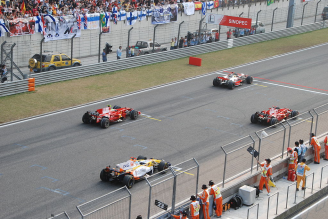
Every driver on the grid will want to complete the race as fast as possible. They will try to follow a "racing line" around the track, which is the path that should be followed to complete a lap in the fastest time possible. This is the path that results in the minimal time being lost by slowing down for each corner of the track. It is a line that F1 drivers will intuitively find, but it can also be found by using mathematical tools (such as mechanics and calculus).
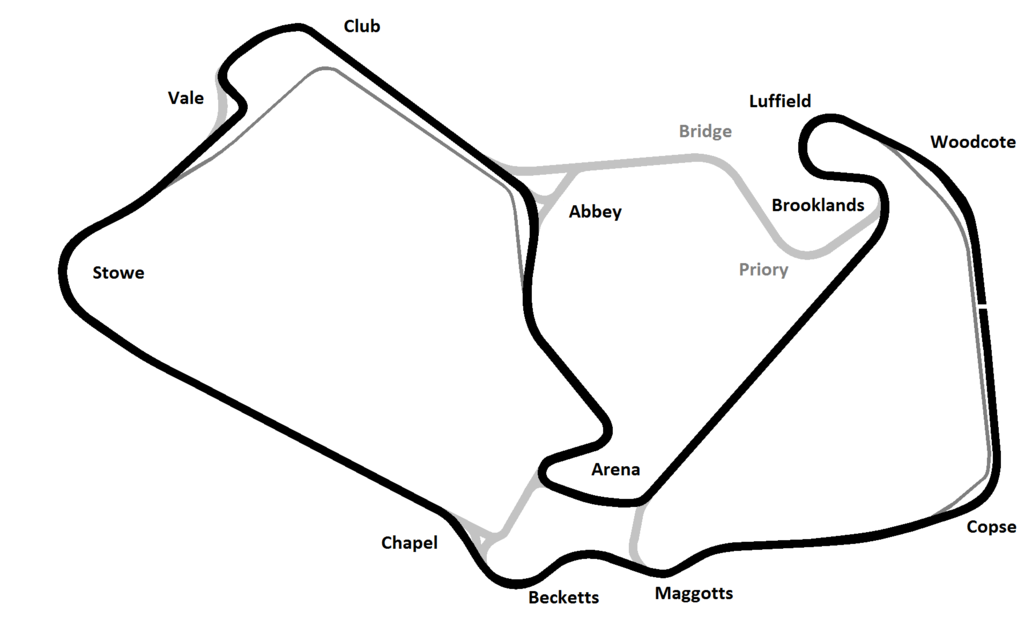
F1 teams will want to work with race strategies that give their drivers the best chance of success in the race. Such strategies will need to take into account the following factors:
- How much fuel should be included in the car at the beginning of the race? If the fuel load is low then the car will be light and faster, but a refuelling "pitstop" will be required early in the race. For safety reasons, drivers must come into and out of the pit by the side of the race track quite slowly, and so time will be lost here. If the car starts the race with enough fuel to complete the race without having to refuel, it will be heavy and slower at the beginning of the race.
- What are the predicted weather conditions for the race and so which tyres are best suited to the race? Chosing the correct tyres is very important for teams, as they determine how well the car grips onto the track (which determines its speed). If the weather conditions change during the race, the team can call the driver into the pits to change tyres.
- The element of competition is core to the race, and teams will tactically choose their strategy to try to gain an advantage over their opponents. Teams will also need to be adaptable during a race, so that they're ready to switch strategies in response to what's happening on the race track.
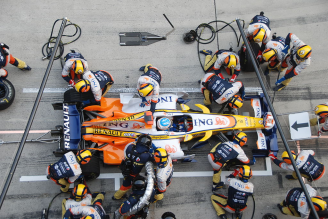
Including all of the above factors would make our mathematical model very complicated. So we simplify the problem slightly to try to offer an initial idea for the best racing strategy ...
Exercises 3
Let us consider the idealised situation in which the perfect tyres have been chosen for a race and that the weather conditions are constant throughout the race. A driver completes a lap of the track in a fastest time of \(a_0\) seconds with a car that contains just enough fuel to complete that lap. Having one extra lap worth of fuel in the car slows it down by \(C\) seconds in that lap.
Let's suppose that the driver takes part in a race with \(N=50\) laps, and completes a lap in \(a_0=100\) seconds when the car is as light as possible. The lap time is \(C=0.1\) seconds slower for every extra lap worth of fuel in the car.
- Calculate the time (in seconds) that the race takes for the driver to complete if he/she starts the race with just enough fuel to finish the race.
- Your team decide that the driver should come into the pits at lap 20 to refuel the car (so that the car is lighter when it starts the race). Coming in and out of the pit safely adds 20 seconds to the lap time. It also takes 0.5 seconds for the team to put 1 lap worth of fuel in the car during a pitstop. Calculate the time it takes to complete the race with this strategy. Is it better than the previous strategy?
- Using the above information, calculate the time taken to complete the race for a two stop strategy, if the driver pits on lap 17 and then again on lap 34.
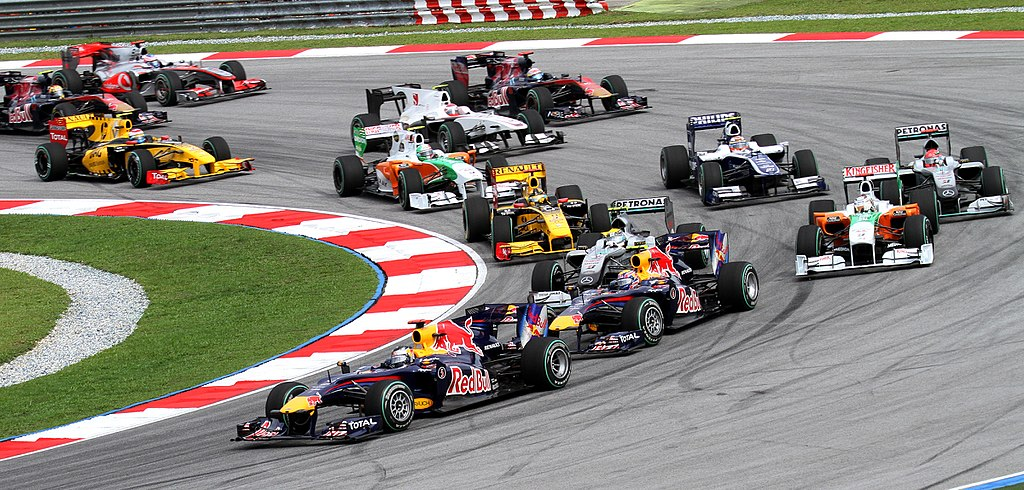
Click on the "continue" button to try out our race applet ...
[4] Image by Bert van Dijk, CC BY-SA 2.0, via Wikimedia Commons
↩
[5] Image by junafanil, CC BY-SA 2.0, via Wikimedia Commons
↩
[6] Image by Bert van Dijk, CC BY-SA 2.0, via Wikimedia Commons
↩
[7] Image by Morio, CC BY-SA 3.0, via Wikimedia Commons
↩
Strategaeth Ras F1
Dychmygwch eich bod yn gweithio fel strategydd i dim Formula 1 (F1), ac wedi cael y dasg o ddarganfod y strategaeth orau ar gyfer ras benodol. Er mwyn gwneud hynny, byddwch angen penderfynu pa gynhwysion y dylid eu cynnwys yn y model mathemategol cyn mynd ati i feddwl pa ddulliau fydd o gymorth i ddatrys y broblem. Cyn gwneud hynny, gadewch i ni gyflwyno'r sefyllfa mewn mwy o fanylder.
Mae ras F1 yn gystadleuaeth rhwng tua 10 tîm, sydd â 2 gar yr un. Bydd y gyrrwyr yn cwblhau'r ras trwy gwblhau \(N\) lap o'r trac rasio (lle mae \(N\) yn gyfanrif). Ddiwrnod cyn y ras bydd y gyrrwyr wedi cwblhau rownd ragbrofol. Bydd amseroedd eu lapiau rhagbrofol yn penderfynu eu safleoedd ar grid cychwynnol y ras.

Amcan pob gyrrwr ar y grid yw cwblhau'r ras mor gyflym â phosib. Byddant yn ceisio dilyn y "llinell rasio" o gwmpas y trac, sef y llwybr y dylid ei ddilyn er mwyn cwblhau lap yn yr amser cyflymaf posib. Dyma'r llwybr o gwmpas y trac sy'n golygu fod cyn lleied â phosib o amser yn cael ei golli trwy arafu ymhob cornel o'r trac. Er fod canfod y llinell rasio yn dod yn reddfol i'r gyrrwyr, byddai'n bosib ei ddarganfod gan ddefnyddio mathemateg (a mecaneg a chalcwlws yn benodol).

Bydd y timau yn gweithio gyda'r strategaeth neu gynllun rasio sy'n rhoi'r cyfle gorau i'w gyrrwyr lwyddo yn y ras. Bydd y cynllun hwn yn cymryd i ystyriaeth ffactorau fel y rhai canlynol:
- Faint o danwydd ddylid ei gynnwys yn y car i ddechrau'r ras? Os yw'r llwyth tanwydd yn isel yna bydd y car yn ysgafn ac felly'n gyflymach, ond bydd rhaid cael "pitstop" yn fuan yn y ras i ail-lenwi'r tanc â thanwydd. Er diogelwch mae cyfyngiadau cyflymder ar geir sy'n dod i fewn ac allan o'r pit, ac felly bydd amser yn cael ei golli yma. Os yw'r car yn cael ei lenwi â digon o danwydd i orffen ras o'r dechrau fel nad yw'n gorfod dod i'r pit o gwbl, yna bydd y car yn drwm ac felly'n dipyn arafach ar ddechrau'r ras.
- Beth yw'r amodau tywydd ac felly'r teiars mwyaf addas? Bydd dewis y teiars cywir yn hanfodol i'r timau, gan eu bod yn effeithio ar afael y car ar y trac (ac felly ei gyflymder). Os yw amodau'r tywydd yn newid yn annisgwyl yn ystod y ras, yna bydd yn rhaid i dîm newid teiars ei geir i rai mwy addas. Bydd posib gwneud hyn trwy ddod i mewn i'r pit.
- Mae'r elfen o gystadleuaeth yn greiddiol i'r ras, a bydd y tîm yn ceisio dewis strategaeth yn dactegol er mwyn cael mantais dros y timau eraill. Yn yr un modd, dylai'r tîm fod yn barod i addasu'r strategaeth yn ystod y ras er mwyn ymateb i'r hyn sy'n digwydd ar y trac rasio, lle gall pethau annisgwyl ddigwydd.

Fe fydd cynnwys yr holl ffactorau uchod yn ein model mathemategol yn ei wneud yn gymleth iawn. Felly gadewch i ni symleiddio'r broblem er mwyn daganfod man cychwyn i ddewis y strategaeth ras orau ...
Ymarferion 3
Gadewch i ni ystyried sefyllfa ddelfrydol lle rydym wedi dewis y teiars perffaith ar gyfer amodau'r tywydd, ac mae'r tywydd yn gwbl sefydlog trwy gydol y ras. Mae gyrrwr yn cwblhau lap o'r trac rasio mewn amser cyflymaf o \(a_0\) eiliad pan mae'r car yn cynnwys digon o danwydd i orffen y lap honno yn unig. Mae cael gwerth un lap ychwanegol o danwydd yn y car yn ei arafu i lawr o \(C\) eiliad yn ystod lap.
Tybiwch fod gyrrwr yn cymryd rhan mewn ras \(N=50\) lap. Mae'n cwblhau lap mewn \(a_0=100\) eiliad os yw'r car mor ysgafn â phosib. Mae amser lap yn arafach o \(C=0.1\) eiliad ar gyfer pob lap ychwanegol o danwydd sydd yn y car.
- Cyfrifwch yr amser (mewn eiliadau) mae’r ras yn ei gymryd i'r gyrrwr os yw ei gar yn dechrau'r ras gyda digon o danwydd i orffen y ras.
- Mae tîm yn penderfynu y dylai'r gyrrwr ddod i mewn i'r pit yn ystod lap 20 er mwyn ail lenwi'r car â thanwydd (fel nad yw'n gorfod dechau'r ras gyda thanc llawn a char trwm). Mae dod i mewn ac allan o'r pit yn ddiogel yn ychwanegu 20 eiliad at amser y lap. Mae hefyd yn cymryd 0.5 eiliad i roi gwerth 1 lap o danwydd yn y car. Cyfrifwch yr amser mae'n ei gymryd i gwblhau'r ras yn yr achos hwn. Ydyw'n well na'r strategaeth flaenorol?
- Gan ddefnyddio'r wybodaeth uchod, cyfrifwch yr amser mae'r ras yn ei gymryd os yw'r gyrrwr yn pitio ar lap 17 ac yna eto ar lap 34.

Cliciwch ar y botwm "ymlaen" isod er mwyn rhoi cynnig ar ddarganfod y strategaeth ras orau gan ddefnyddio ein gêm syml ...
[4] Delwedd gan Bert van Dijk, CC BY-SA 2.0, trwy Wikimedia Commons
↩
[5] Diagram gan junafanil, CC BY-SA 2.0, trwy Wikimedia Commons
↩
[6] Delwedd gan Bert van Dijk, CC BY-SA 2.0, trwy Wikimedia Commons
↩
[7] Delwedd gan Morio, CC BY-SA 3.0, trwy Wikimedia Commons
↩
More Exercises
Exercises 4
A F1 team chose a 1-stop strategy, and need to find the best lap for pitting. The race has 50 laps and a lap is completed in 100 seconds when a car is as light as possible. As before, the car is slowed by 0.1 seconds in a lap for every additional lap worth of fuel in the tank. Coming into and out of the pits safely during a pitstop will take an additional 20 seconds and it takes 0.5 seconds to refuel the car with one lap worth of fuel.
- If the driver comes into the pit during lap \(l_1\), show that the time taken to complete the race is $$T=0.1l_1^2-5.5l_1+5167.5.$$
- Find the optimal one-stop pitting strategy for this race. That is find the value of \(l_1\) that gives the smallest value for \(T\). Hint: You can find the optimal value of \(l_1\) by trial and error using the applet from the previous section, or (if you have studied calculus) by computing and using the derivative \(\frac{dT}{dl_1}\).
Exercises 5
In F1, a qualifying round takes place on the day before the main race. To qualify for the race, driver B has to achieve a lap time that is within a particular percentage of the fastest lap achieved by all of the competing drivers.
Supoose that driver A achieved the fastest lap in qualifying. Driver B manages to qualify for the race with a lap time that is exacly 107% of the fastest lap by driver A. Suppose also that both drivers maintain these respective speeds exactly throughout a 50 lap race.
- During which lap will driver B be overtaken (that is "lapped") by driver A?
- How many times can driver B be expected to be lapped by driver A during the race?
Mwy o Ymarferion
Ymarferion 4
Mae tim f1 yn dewis stategaeth ras 1 stop, ac angen darganfod y lap orau ar gyfer dod i mewn i'r pit. Mae'r ras yn un 50 lap, a caiff lap ei chwblhau mewn 100 eiliad pan mae'r car mor ysgafn â phosib. Mae lap yn cymryd 0.1 eiliad yn ychwanegol am bob lap ychwanegol o danwydd sydd yn y car. Ar gyfer pitstop, mae 20 eiliad ychwanegol yn cael ei gymryd i ddod i mewn ac allan o'r pit yn ddiogel ac mae'n cymryd 0.5 eiliad i roi gwerth 1 lap o danwydd yn y car.
- Os yw gyrrwr yn pitio ar lap \(p_1\), dangoswch ei fod yn cwblhau'r ras mewn amser o $$T=0.1p_1^2-5.5p_1+5167.5.$$
- Felly darganfyddwch y strategaeth pitio unwaith orau ar gyfer y ras yma. Hynny yw darganfyddwch y gwerth o \(p_1\) sy'n rhoi'r gwerth lleiaf posib o \(T\). Awgrym: Gallwch naill ai ddarganfod y gwerth gorau o \(p_1\) trwy ddefnyddio'r gêm flaenorol, neu os ydych wedi astudio calcwlws, efallai y bydd cyfrifo'r deilliad \(\frac{dT}{dp_1}\) o gymorth.
Ymarferion 5
Mae rownd rhagbrofol ras F1 yn digwydd ddiwrnod cyn y brif ras. Er mwyn cael rasio yn y brif ras F1, mae’n rhaid i yrrwr (B) gyflawni lap sydd o fewn rhyw ganran o lap gyflymaf yr holl yrrwyr.
Gadewch i A ddynodi'r gyrrwr cyflymaf. Tybiwch fod gyrrwr B yn llwyddo i gael lle yn y ras gyda lap gyflymaf sydd yn union 107% o amser lap gyflymaf gyrrwr A. Tybiwch hefyd fod y gyrrwyr yn teithio ar y cyflymderau yma trwy gydol ras 50 lap.
- Yn ystod pa lap fydd gyrrwr B yn cael ei basio (hynny yw ei "lapio") gan yrrwr A?
- Faint o weithiau fydd gyrrwr B yn cael ei lapio gan yrrwr A yn ystod y ras?


